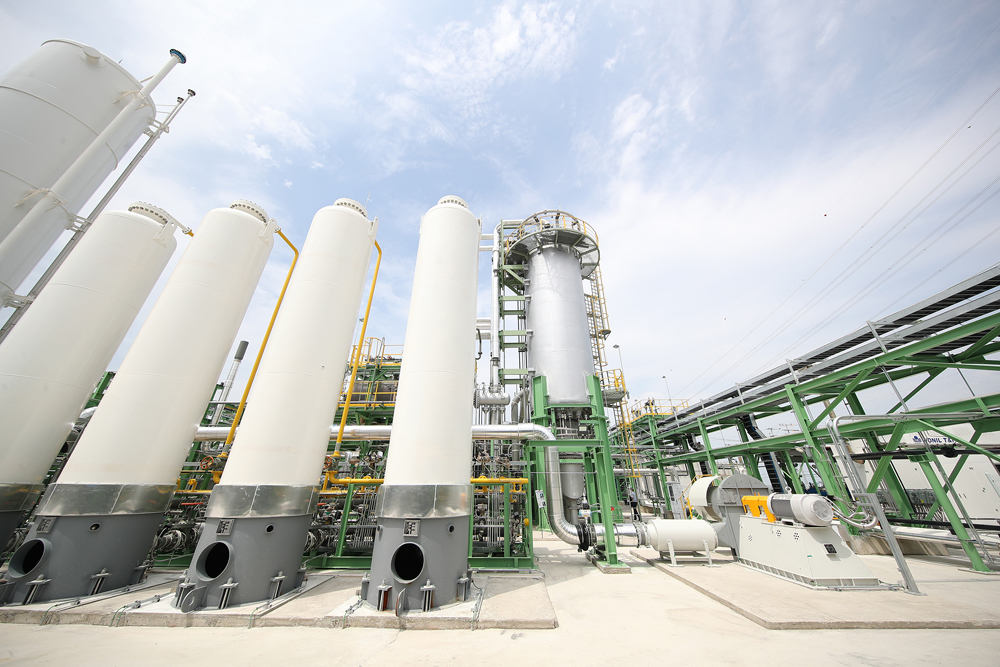South Korea has completed a KRW 23 billion ($17.5 million) hydrogen production complex that can fuel 410,000 hydrogen vehicles per year.
Opened in Pyeongtaek City, Gyeonggi Province, on July 27, Pyeongtaek Complex is the first of its kind in the Korean capital region and the second in the nation after the facility in Changwon City – the capital of South Gyeongsang Province – which has been operating since the end of last year.
The newly constructed complex will produce hydrogen by reforming natural gas – a process of pyrolyzing natural gas via steam – supplied from the Pyeongtaek LNG receiving base. This is not a green process, as carbon monoxide and carbon dioxide are biproducts. For this reason, the process is called “grey” rather than green.
From August, up to seven tons of hydrogen are slated for production per day, translating to an approximately 2,450 tons a year. This is the largest production amount in South Korea, capable of fully refuelling 1,200 hydrogen cars a day or approximately 410,000 a year.
“One of the future challenges we must overcome is climate change,” said Gyeonggi Province Governor Dong Yeon Kim.
Previously, Governor Kim pledged to create a “hydrogen fusion cluster” in the cities of Pyeongtaek and Ansan and make it a key hub for the hydrogen industry through linkage with specialized industries in the region.
Following the construction of the hydrogen production complex, Gyeonggi Province and Pyeongtaek City plan to build a hydrogen transportation complex connected to hydrogen refuelling stations near Pyeongtaek Port and to create a “hydrogen city” that uses hydrogen as its main energy source, the press release said.
Most of the 33 hydrogen refuelling stations currently operating in the Korean capital region are supplied with hydrogen from remote locations such as Daesan, Ulsan, and Yeosu, which are more than 120km away on average. As the completion of this complex stands to substantially reduce hydrogen transportation costs, the provincial government expects the hydrogen supply price in the capital region area to drop as well, the statement said.
Meanwhile, from 2019, the Korean central government, Ministry of Trade, Industry and Energy to be precise, has been planning to build small hydrogen production bases that supply hydrogen fuel using city gas near demand sites so as to resolve the regional bias in the supply of hydrogen produced in petrochemical complexes such as Daesan, Ulsan and Yeosu. This initiative is being implemented in seven regions across the country, the release said.
The Ministry plans to complete seven small-scale hydrogen production bases, all natural gas-based, within this year to realize carbon neutrality, and to additionally support the construction of clean hydrogen production bases with water electrolysis and carbon capture functions by 2026, it said. The latter will be essential for this hydrogen fuel to become a truly green energy source.
